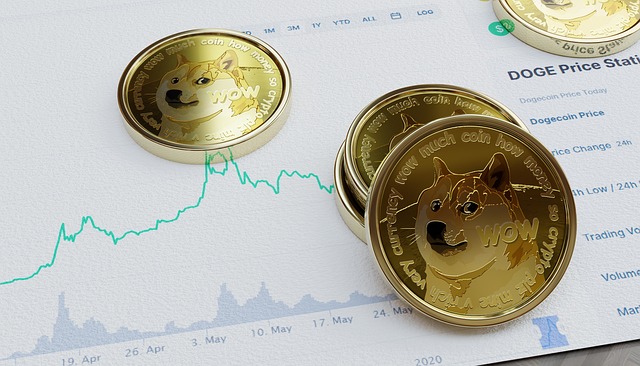Crypto Average Price Calculator: A Comprehensive Guide for Traders and Investors
Author: Jameson Richman Expert
Published On: 2025-08-25
Prepared by Jameson Richman and our team of experts with over a decade of experience in cryptocurrency and digital asset analysis. Learn more about us.
Understanding how to accurately determine the crypto average price is an indispensable skill for both novice and seasoned traders aiming to navigate the highly volatile and fragmented cryptocurrency markets. Given the rapid and often unpredictable price swings, which can occur within seconds, alongside the multitude of exchanges, liquidity pools, and differing trading volumes, relying solely on the real-time price from a single source can significantly distort market perception and lead to suboptimal trading decisions. Instead, utilizing a crypto average price calculator—which consolidates data from multiple reputable exchanges—facilitates a more holistic, accurate, and reliable snapshot of current market sentiment. This article delves deeply into why average prices matter, the methodologies behind their calculation, practical applications, challenges, and essential resources—equipping you with the insights needed for more informed trading and investing.

Why Is a Crypto Average Price Calculator Crucial?
The cryptocurrency market is characterized by extreme volatility driven by macroeconomic factors such as inflation, monetary policy shifts, geopolitical tensions, regulatory announcements, technological upgrades, and macro events like macroeconomic crises or global pandemics. Additionally, large block trades, market manipulation attempts, regional trading restrictions, and differences in exchange liquidity can cause significant price disparities between platforms.
For example, during a sudden price surge, some exchanges may experience slippage or transient spikes that do not reflect the broader market trend. Relying solely on the price reported by one exchange—especially smaller, less liquid ones—can lead traders to make misinformed decisions, such as entering or exiting positions at unfavorable levels. This is where a crypto average price calculator becomes essential. By aggregating data from multiple exchanges such as Binance, Coinbase, Kraken, Huobi, Bitfinex, and others, it provides a consolidated view that smooths out anomalies and outliers.
This approach typically employs a volume-weighted average price (VWAP) methodology, which considers not only the prices but also the trading volumes at each exchange. As a result, the average more accurately reflects where the majority of trading activity is happening, making it a more meaningful benchmark for traders and investors.
Such an average serves multiple strategic purposes: it aids in setting more precise entry and exit points, helps detect genuine trend reversals, guides arbitrage opportunities, and informs long-term accumulation or divestment decisions. Moreover, it reduces emotional reactions to short-term volatility, fostering disciplined, data-driven trading strategies.
Maximizing Effectiveness with a Crypto Average Price Calculator
To leverage a crypto average price calculator effectively, it is crucial to understand the origins of the data and the calculation methodologies. A robust setup involves careful selection of data sources, weighting algorithms, and automation techniques.
Key principles for optimal use include:
- Selecting reputable data sources: Use established aggregators such as CoinMarketCap, CoinGecko, TradingView, and direct exchange APIs. These platforms offer high-frequency, accurate, and comprehensive data from a wide array of markets worldwide.
- Prioritizing volume-weighted averages: VWAP ensures the average price emphasizes exchanges with higher trading volumes, reducing distortions caused by illiquid or anomalous trades on less active platforms.
- Automating data collection: Implement APIs from top exchanges like Binance, Coinbase Pro, Kraken, and others to fetch real-time data. Automation enables dynamic dashboards, custom alerts, and even algorithmic trading based on current average prices.
- Cross-validating data: Always compare the computed average with individual exchange prices and other analytical tools. Sudden discrepancies can signal data feed issues, exchange outages, or market anomalies needing further investigation.
In practice, building personalized dashboards that integrate real-time data feeds, historical averages, volume trends, and alert systems enhances decision-making speed and accuracy—especially during high volatility periods. For instance, combining API data with Python scripts using libraries like ccxt, pandas, and requests can automate data processing and visualization, allowing traders to respond swiftly to market shifts.
Practical Applications of a Crypto Average Price Calculator
The versatility of an average price calculator makes it a vital tool across numerous trading and investment strategies:
- Arbitrage Trading: By comparing the average prices across multiple exchanges, traders can identify discrepancies that may present arbitrage opportunities. For example, if Binance reports an average Bitcoin price of $30,200 while Coinbase shows $30,400, a trader might execute simultaneous buy and sell orders—considering transfer times and fees—to capture the profit margin.
- Refined Entry and Exit Points: Using an aggregated average reduces noise and short-term volatility effects, enabling traders to set more reliable entry, exit, and adjustment levels—particularly beneficial for swing trading or scalping strategies.
- Long-term Investment Decisions: Historical average prices help in assessing fair value zones—preventing impulsive buying during euphoric peaks or panic sales during dips—thus fostering disciplined accumulation or divestment strategies.
- Risk Management and Position Sizing: Accurate average prices underpin the proper placement of stop-loss and take-profit orders, preventing premature exits or overexposure during sharp market swings.
For example, during a market correction, if the current trading price falls significantly below the long-term average, it could indicate an oversold condition, presenting a strategic buying opportunity. Conversely, when prices stay well above the average, it might signal overbought territory, prompting caution or profit-taking.

Challenges and Limitations to Consider
While invaluable, crypto average price calculators are not without their challenges. Being aware of these limitations allows traders to develop more resilient and nuanced strategies:
- Data Accuracy and Latency: API delays, exchange outages, or lagging data feeds can produce inaccurate or stale averages. During critical market moments, even minor discrepancies can lead to misguided trades.
- Exchange Variability: Smaller, less-liquid exchanges may report volatile or erroneous prices, which, if not properly weighted or filtered, can skew the average.
- Outliers and Anomalies: Flash crashes, erroneous data entries, or manipulation by large traders can produce outlier prices that distort the average. Implementing filtering algorithms to exclude such anomalies is vital.
- Niche or Low-Volume Assets: For lesser-known tokens or low-volume assets, limited exchange coverage can render averages unreliable or irrelevant. Caution is advised when applying these tools to niche markets.
Mitigation strategies include:
- Using volume-weighted averages: Prioritize data from high-liquidity exchanges to diminish the impact of outliers.
- Cross-referencing multiple sources: Validate data with various aggregators and direct exchange APIs to catch inconsistencies.
- Implementing data filters: Employ algorithms or manual checks to exclude sudden spikes, erroneous entries, or anomalous trades.
- Regularly updating tools and APIs: Keep your data feeds current and compatible to maintain accuracy and security.
Key Platforms and Resources for Crypto Price Aggregation
Several platforms provide comprehensive, real-time, and accurate data, essential for generating reliable averages:
- CoinMarketCap: Offers extensive price data, trading volume metrics, historical charts, and robust API access—ideal for building custom analytical dashboards and tools.
- CoinGecko: Delivers detailed exchange data, volume-weighted averages, DeFi asset insights, and community-driven metrics, providing broader market context.
- TradingView: A sophisticated charting platform supporting custom scripts (via Pine Script). Traders can visualize moving averages, calculate averages, and set alerts based on dynamic criteria.
- Direct Exchange APIs: Binance, Kraken, Bitfinex, Huobi, and others offer real-time data feeds suitable for integration into personalized trading bots and analysis tools for maximum control and precision.
For automation and advanced analytics, combining these platforms with programming languages like Python (using libraries such as ccxt, pandas, and requests) enables the creation of live dashboards, automated alerts, and algorithmic trading strategies based on average prices. Engaging with community resources on Reddit, Telegram, or Discord can also provide valuable scripts, shared strategies, and best practices for utilizing average prices effectively.
For example, a popular community resource is this Telegram crypto trading bot community, which offers automation scripts tailored for leveraging average prices in real-time trading scenarios.
Affiliate Opportunities and Referral Programs
Many reputable exchanges offer referral programs that reward users with benefits such as fee discounts, sign-up bonuses, or exclusive trading features—providing an incentive to start and expand your trading activities:
- Binance: The largest global exchange with low trading fees, extensive asset offerings, and advanced trading options suited for all levels.
- MEXC: Offers diverse tokens, futures trading, and innovative features ideal for professional traders.
- Bitget: Known for derivatives and social trading, suitable for leveraged trading enthusiasts.
- Bybit: Popular for leveraged trading and derivatives, with attractive bonuses for new users.
Registering through these referral links can grant benefits such as reduced trading fees, deposit bonuses, and early access to new features, enhancing your trading experience as you grow your portfolio. Always ensure the platform's security standards and compliance before depositing funds.

Final Recommendations and Resources for Continued Learning
Mastering a crypto average price calculator is fundamental for executing disciplined, data-driven trading strategies. Combining reliable tools, proper volume-weighted algorithms, automation, and continuous validation significantly enhances trading precision and minimizes emotional biases.
Furthermore, ongoing education on market fundamentals, technical analysis, and emerging trading technologies is essential. Explore comprehensive guides such as How to Trade on Bybit in 2025 or stay updated with market outlooks like Market Outlook for 2025. For automation enthusiasts, advanced resources like the Telegram Trading Bot community are invaluable.
In conclusion, developing proficiency in calculating and interpreting crypto average prices transforms volatility into opportunity. Data-backed decisions and disciplined strategies are your best tools for sustained success in the fast-evolving crypto landscape. Keep refining your tools, stay informed about market developments, and prioritize risk management—your pathway to consistent profitability.